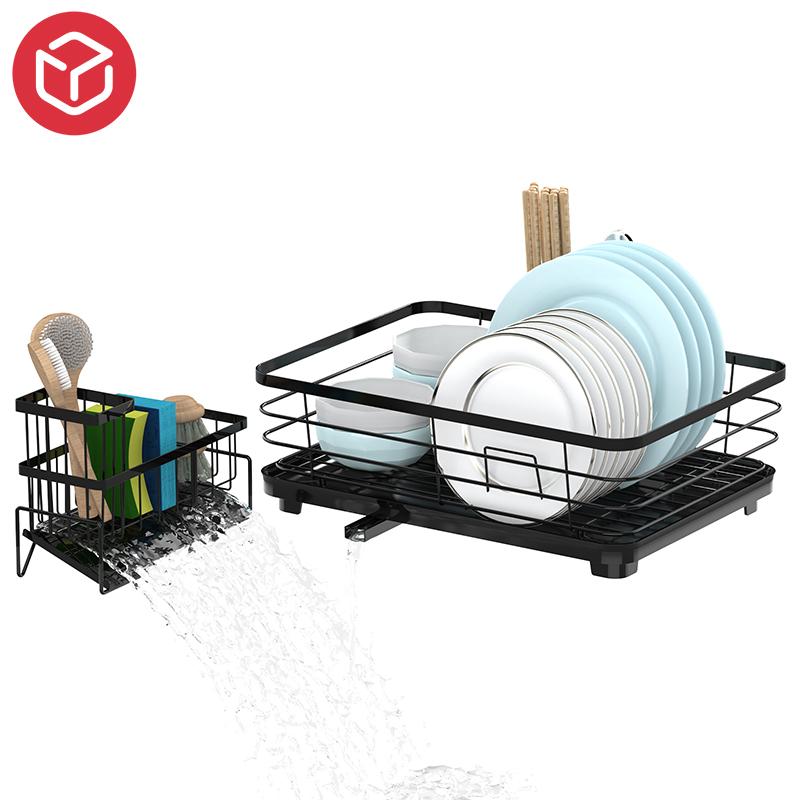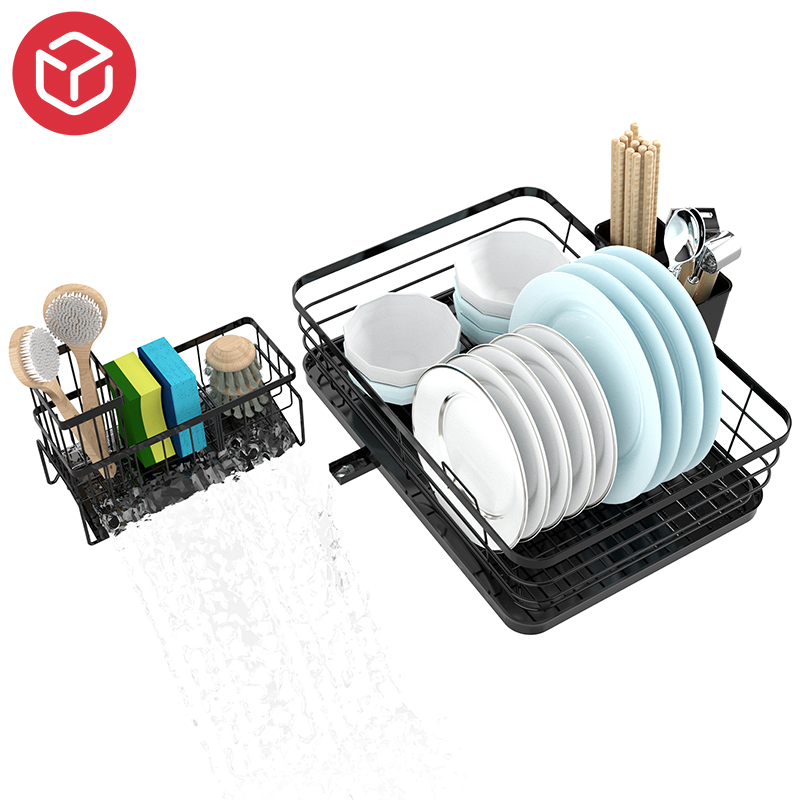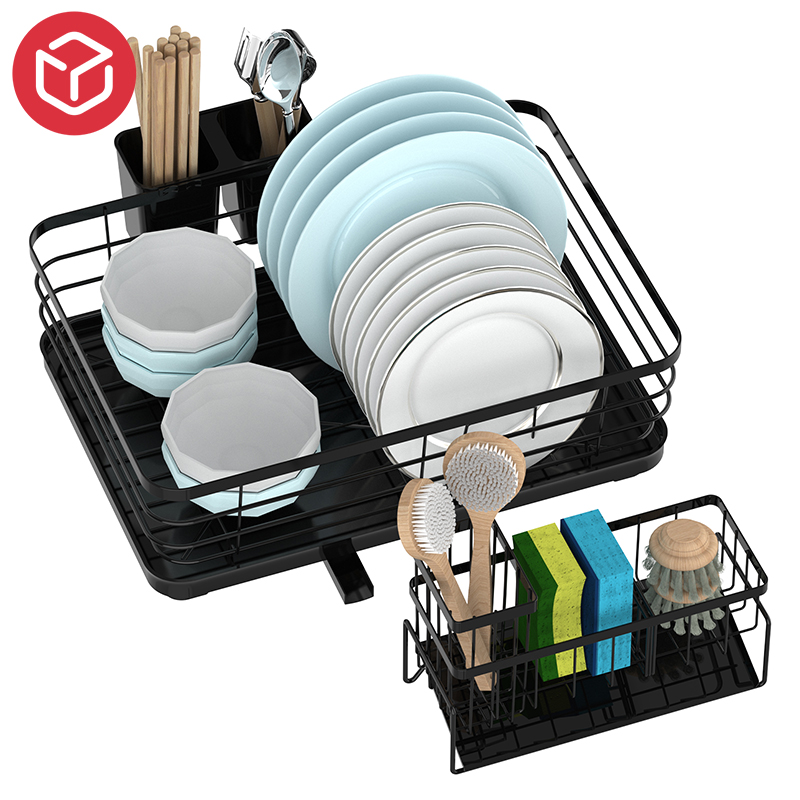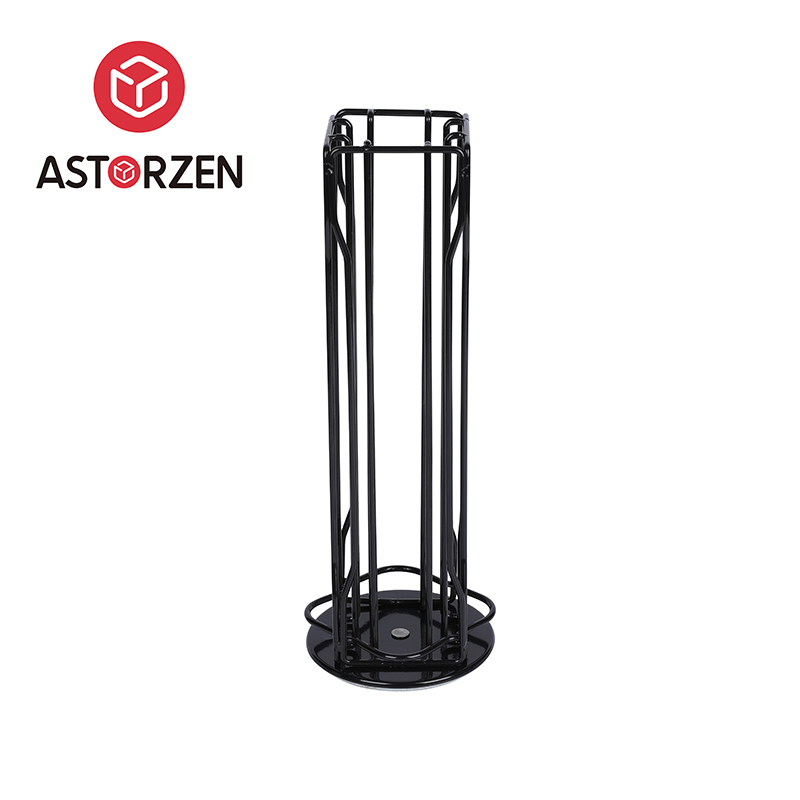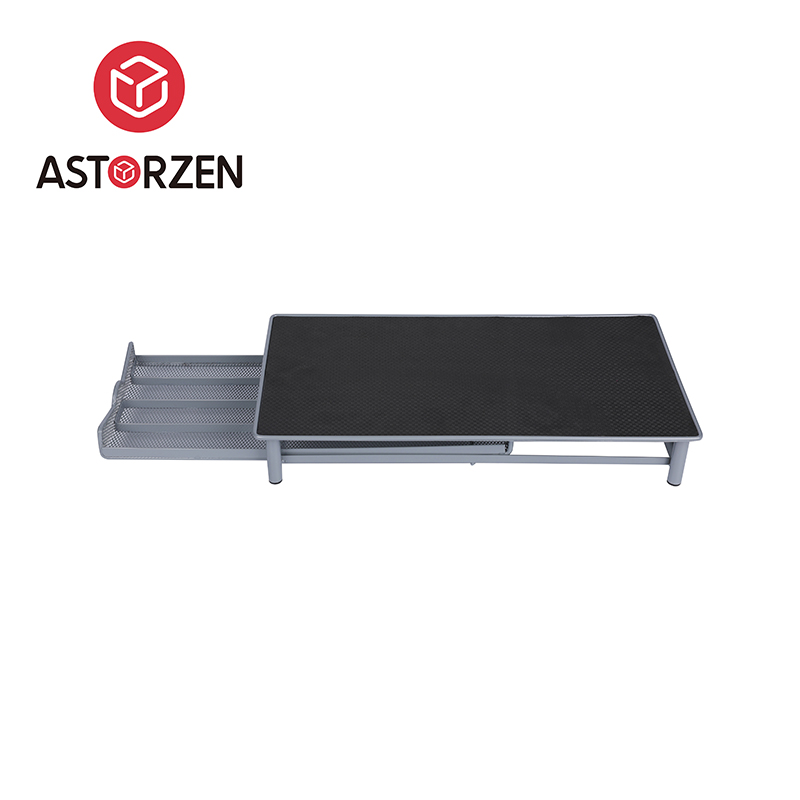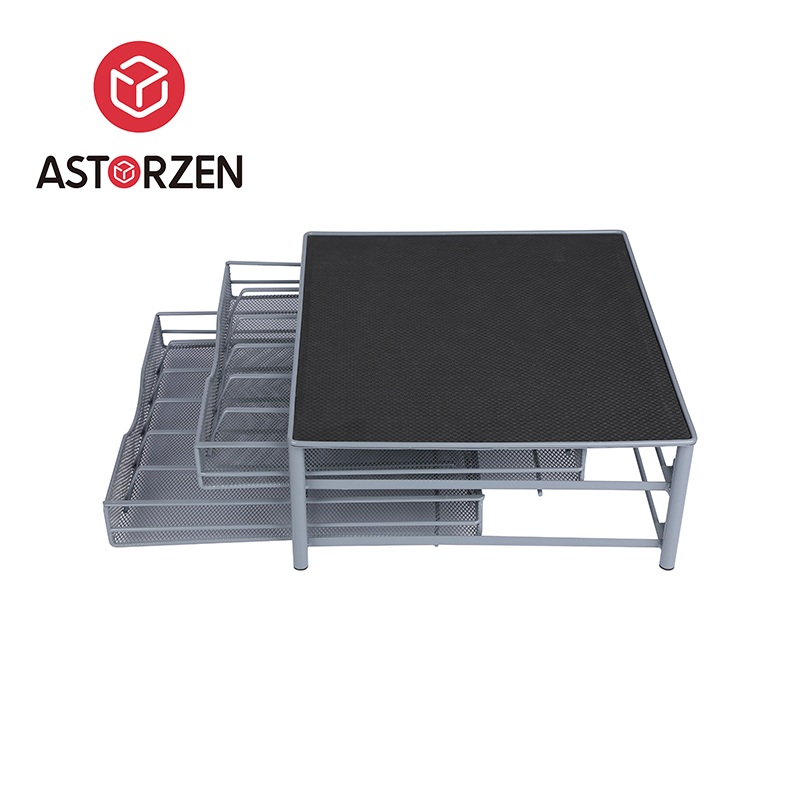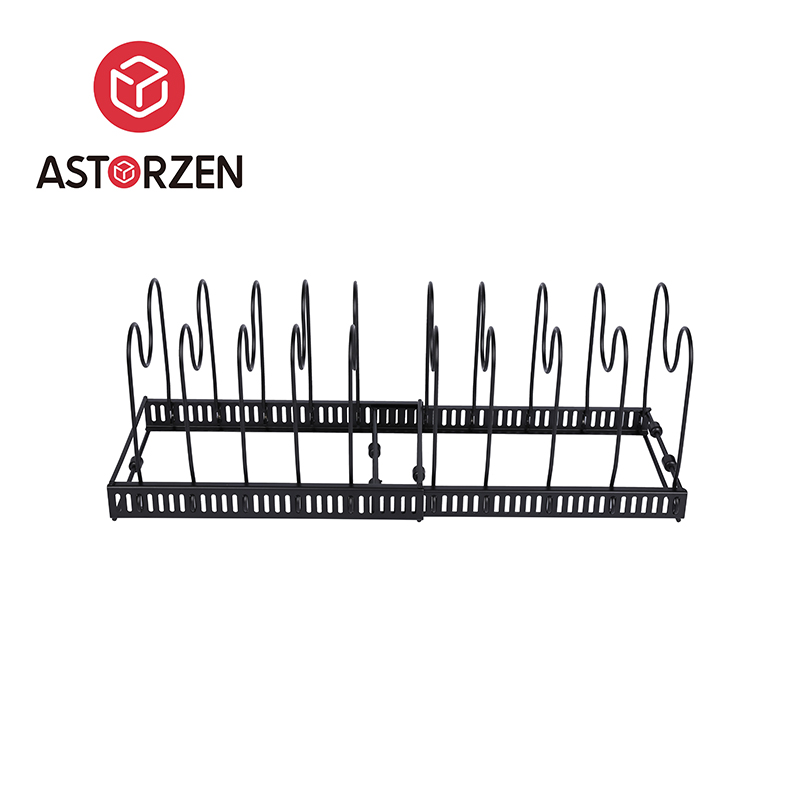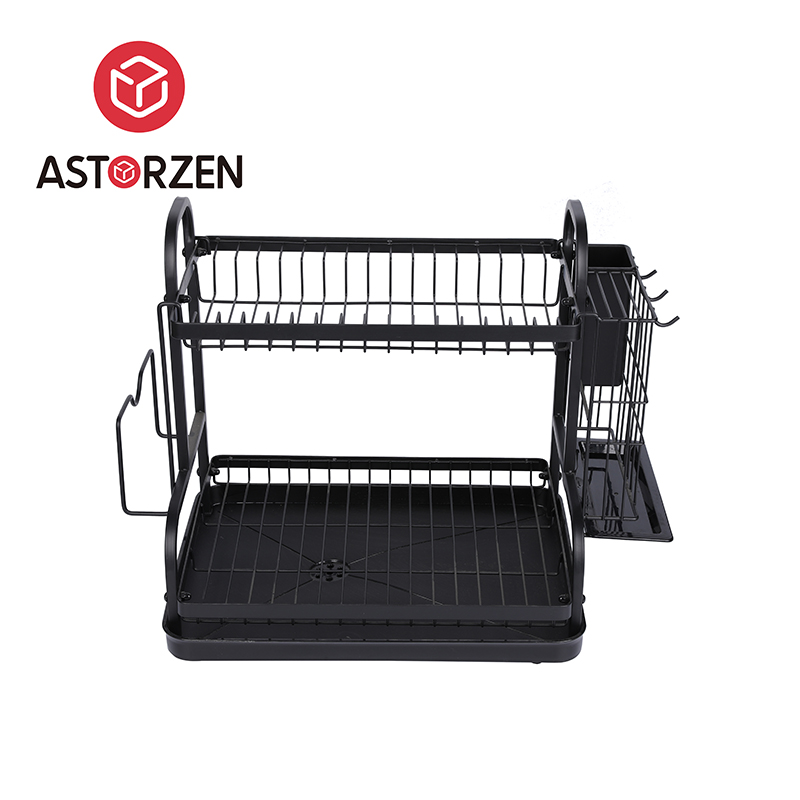|
Model |
HL002 |
|
Material |
Metal |
|
Size |
42x30x14cm,23x9x16cm |
|
Surface treatment |
Power coating or spray |
|
Color |
Balck, white, silver, customized |
|
Fearture |
premium, customizable, eco-friendly |
-
 +86-15257906761
+86-15257906761
-
 sales1@astorzen.com
sales1@astorzen.com
Durable Rust-Proof Kitchen Countertop Dish Rack Tableware Drainer
This two-piece dish rack set includes a large and a small drainer.
Large Drainer (42 x 30 x 14 cm): Provides ample space for drying plates, bowls, and utensils.
Small Drainer (23 x 9 x 16 cm): Ideal for storing kitchen tools such as sponges, cleaning brushes, and cutlery.
Key Features:
1. Rust-Resistant & Durable: Made from high-quality, corrosion-resistant materials for long-term use.
2. Efficient Drainage: Features a sloped design with smooth water runoff to prevent pooling.
3. Space-Saving & Stable: Compact footprint with a non-slip base for secure placement on countertops.
4. Practical Design: Multi-tiered structure maximizes drying space while maintaining a sleek, functional layout.

-
0m²+
Factory area
-
0+ million$
Annual export value
-
0+
Number of employees
Please feel free to leave a message and we will reply to you soon.
Products Industry Knowledge
Design Considerations for Dish Racks
When designing a dish rack, several factors should be taken into account to ensure it's both functional and aesthetically pleasing. The primary considerations include size, material, drainage, and capacity.
1. Size and Space Efficiency: The size of the dish rack should complement the available counter space in the kitchen. A large rack can be cumbersome and take up too much space, while a smaller one may not accommodate all the dishes. It's important to find the right balance between capacity and space efficiency. Additionally, a well-designed dish rack will consider vertical space, with tiered shelves to store dishes in an organized manner without overcrowding.
2. Material Choice: Dish racks are typically made from materials such as stainless steel, plastic, or bamboo. Stainless steel is durable, rust-resistant, and easy to clean, making it a popular choice. Plastic is lightweight and affordable, but it may not be as long-lasting. Bamboo, while eco-friendly, needs more maintenance to prevent water damage. The choice of material should align with the user's priorities, whether durability, style, or eco-friendliness.
3. Drainage and Water Flow: A well-designed dish rack must ensure proper drainage to avoid water pooling on the countertop. Drainage is typically achieved through angled surfaces and well-placed drain holes that direct water toward a drain board or directly into the sink. Proper drainage ensures the drying process is quick and hygienic, preventing bacteria buildup due to stagnant water.
Dish Rack with Drain Board Technology
A dish rack with a drain board offers a more advanced solution for drying dishes, addressing common issues such as water pooling on countertops. This type of dish rack integrates a built-in drainage system that directs excess water from the rack to a separate drain board, which can be placed on the counter or directly over the sink. The design of this rack type is particularly beneficial for maintaining a clean and dry kitchen environment.
1. Water Management: One of the standout features of a dish rack with drain board technology is its efficient water management system. Many models feature an angled rack that encourages water runoff into the drain board. Some even have raised edges or channels on the drain board to ensure that water flows directly into the sink, preventing puddles on the countertop. This feature significantly reduces the risk of bacterial growth caused by stagnant water.
2. Convenience and Hygiene: By directing water away from the countertop, these dish racks help maintain a dry and clean surface, which is crucial for kitchen hygiene. The convenience of having a dedicated area for draining excess water makes washing and drying dishes quicker and more efficient. Many drain boards are designed to be easily removable for cleaning, which ensures that the drying area remains free of grime and soap scum.
3. Material and Design Variations: Dish racks with drain boards are available in various materials such as stainless steel, plastic, and bamboo. Stainless steel models often offer a sleek, modern look and durability, while plastic options tend to be lighter and more affordable. Bamboo drain boards provide an eco-friendly option that is both aesthetically pleasing and functional but may require more maintenance to ensure they remain water-resistant.
The kitchen sink dish rack is a space-saving solution designed to fit directly over or next to the sink, taking full advantage of the available area. This design allows for immediate drainage into the sink and eliminates the need for a separate drain board, freeing up counter space. Kitchen sink dish racks are particularly useful in smaller kitchens or in homes where counter space is limited.
1. Space Efficiency: The primary advantage of a kitchen sink dish rack is its ability to save space. By utilizing the area directly around or over the sink, these racks offer a compact and organized solution for drying dishes. They often feature a hanging design, allowing dishes to drip dry directly into the sink without taking up precious countertop space. This is especially valuable in small kitchens where counter space is at a premium.
2. Versatility and Features: Kitchen sink dish racks come in various designs, from simple wire frames to more elaborate models that include built-in utensil holders, cutting board stands, and cup racks. Some racks are designed to fit across the entire sink, while others are narrower, leaving space for other kitchen tasks. The versatility of these racks makes them suitable for a variety of kitchen configurations.



 English
English 日本語
日本語 русский
русский عربى
عربى